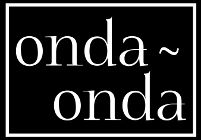Dulce de Leche vs. Caramel vs. Toffee – What's the Difference?
Discover the key differences between dulce de leche, caramel, and toffee. Learn about their unique preparation methods, flavors, and best uses in desserts.
If you’ve ever wondered about the difference between dulce de leche, caramel, and toffee, you’re not alone. While these sweet treats might look similar, each has its own unique character, preparation method, and best uses in the kitchen.
Understanding the Basics
Dulce de Leche: The Milk Caramel
Dulce de leche, literally meaning “milk candy” in Spanish, is made by slowly cooking milk and sugar together until they transform into a thick, creamy, golden-brown spread. This South American favorite has a complex flavor profile that’s both sweet and slightly tangy.
Key characteristics:
- Made primarily from milk and sugar
- Slow-cooked for hours
- Creamy, spreadable consistency
- Rich, complex flavor with subtle tang
- Lighter golden-brown color
Traditional Caramel: The Sugar Star
Regular caramel starts with sugar that’s heated until it melts and caramelizes, creating that distinctive amber color and nutty flavor. Cream and butter are then added to create the smooth texture we know and love.
Key characteristics:
- Starts with caramelized sugar
- Cream and butter added later
- Can range from soft to hard consistency
- Sweet with nutty, burnt sugar notes
- Darker amber color
Toffee: The British Classic
Toffee is made by cooking sugar and butter together to the hard crack stage (around 150°C). This creates a hard, brittle candy that can be eaten on its own or used as a crunchy element in desserts.
Key characteristics:
- Made with sugar and butter
- Cooked to hard crack stage
- Hard, brittle texture
- Rich, buttery flavor
- Golden to dark brown color
The Flavor Difference
The most significant difference lies in the flavor profiles:
- Dulce de leche offers a creamy, milky sweetness with a slight tang from the slow cooking process
- Caramel provides a more intense, nutty sweetness from the caramelized sugar
- Toffee delivers a rich, buttery crunch with deep caramel notes
Best Uses in the Kitchen
Dulce de Leche Shines In:
- Spreading on toast, crackers, or fruit
- Swirling into ice cream or yogurt
- Filling for cakes and pastries
- Drizzling over desserts
- Making traditional South American treats like alfajores
Caramel Works Best For:
- Caramel apples and candies
- Sauce for ice cream and desserts
- Caramel popcorn
- Flan and crème caramel
- Salted caramel applications
Toffee Is Perfect For:
- Eating as a standalone candy
- Chopping into bits for cookies and cakes
- Banoffee pie (hence the name!)
- Ice cream mix-ins
- Gift giving and confectionery
Making the Right Choice
When choosing between these sweet options, consider:
- For spreading and drizzling: Choose dulce de leche
- For sauces and liquid applications: Go with caramel
- For texture and crunch: Pick toffee
At Onda Onda, we’re passionate about authentic dulce de leche made using traditional South American methods. Our gourmet dulce de leche brings you that distinctive creamy texture and complex flavor that can only come from slowly cooking premium milk and sugar to perfection.
Ready to experience the difference? Find where to buy Onda Onda and taste authentic dulce de leche for yourself.
